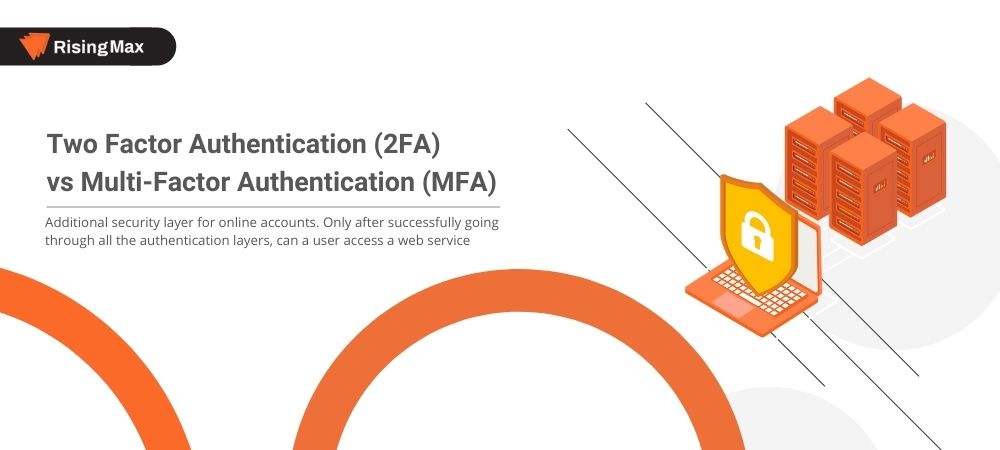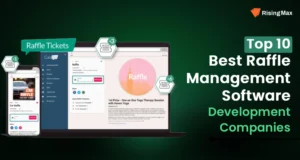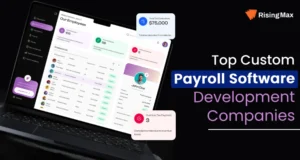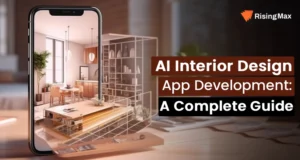Data security has become a major concern for companies, especially those dealing with sensitive data. Therefore, creating a safe and secure environment becomes a priority for every concerned entrepreneur.
If you’re new to cybersecurity, terms like multi-factor and two-factor authentication may confuse you. People often use two-factor authentication (2FA) and multi-factor authentication (MFA) interchangeably, but they are different.
Users must rely on two-factor authentication (2FA) and multi-factor authentication (MFA) to protect user accounts, assets, and data as cybercriminals develop more sophisticated methods of breaching single-factor security. But what is the difference between 2FA and MFA?
As 2FA and MFA have different impacts, let us learn about 2fa vs mfa in detail with this blog.
RisingMax has FORMED A BODY of Business Advisors to support startups like you from beginning to success. Whether you’re starting out, or scaling to meet demand, connect with the right people, products, and best practices to help your startup grow. Connect Us Now!
Cybersecurity Threats So Far In 2023
- In the first quarter of 2023, cyber attackers worldwide increased cyberattacks by 7 percent. Each company is experiencing an average of 1248 cyberattacks per week, a 7% increase from last year.
- Check Point’s analysis reveals that ransomware hit at least one business per week in Q1 2023, affecting every 31st business across the globe.
Think. Launch. Grow.
Considering these stats, major business players won’t rely on a single strong password to protect their confidential business and customer information. Thus, choosing between two-factor authentication and multi-factor authentication is ideal for concerned market players.
If you are also planning to protect business data from cybercrimes but are confused between Two Factor Authentication and Multi-Factor Authentication. You are at the right place. Here you will learn the difference between MFA and 2FA and which solution will be ideal for your business.
Also Read: How To Start An Online Food Delivery Services Business In 2022
What Is Two Factor Authentication (2FA)?
2FA, two-factor authentication, is an additional security layer for online accounts. In this authentication process, users need a username, a password, and additional information to prove their identity. Some common examples of 2FAs are fingerprint scans, OTP, or a security question. Users can access their account or any other private information only after verification.
So, why is there a need for a 2FA? And the answer is pretty simple – one-factor authentication is not enough or, let’s say, inefficient today. Cybercriminals can hack into your account and gain access to valuable information if they have your login credentials. However, an additional security layer, thanks to 2FA, makes it hard for anyone to access your account even if they have your credentials.
Get Real Time IT Solution & Consultancy For Any Business. We are app development company and have already developed many apps like Uber eats, Zocdoc, swiggy etc.
Working of Two-Factor Authentication
Before deciding whether or not to go for two-factor authentication, you first need to understand how it works. The working of the two-factor authentication can be broken into three categories for easy understanding:
- Knowledge: Users will enter information like a security question, a PIN, pattern, or a specific keystroke, in addition to login credentials to access their account.
- Possession: In order to prove their identity, a user must physically possess authentication devices like a card or a USB drive.
- Biology: The user adds a biological feature like fingerprint or voice in this authentication factor. After approval, the user can access their account.
Different Types of Two Factor Authentication
There are different types of 2FA available, and each of them requires certain factors for authentication. Here are some types of two-factor authentication we have listed below:
- Hardware tokens: In this 2FA, the user needs a hardware token like a USB to gain access to the account. Some hardware tokens generate a manual code when connected that the user needs to enter manually.
- SMS and voice: Users will enter the numeric code sent via text or voice call to enter a site or account in this verification method.
- Software tokens: Some websites and applications have a 2FA feature where they send a verification code that a user needs to enter to log in.
- Push notifications: Push notifications are another way to enhance the security of users’ accounts. The website or application will send a push notification to the users to approve that they are trying to gain access to the account. After approval, the user will be allowed to access the associated account.
- Biometrics: In this method, the user needs to verify their physical identity like Fingerprint to log into the device or their account. This verification method is widely used in smartphones.
- Location: In this verification method, if anyone tries to log in to the system from a different location, this will trigger an alert. The user will enter the verification code sent or approve that the login attempt is authentic to move further.
Also Read: Top Ideas For Taxi Business in 2022
What is Multi Factor Authentication (MFA)?
The main difference between the 2FA and MFA is the number of authentication layers. In MFA, the user needs to go through various authentication layers to access the account. Only after successfully going through all the authentication layers, user can access a web service or account such as a Netflix account, bank account, or Facebook account.
If you are thinking, why is there a need for multi-factor authentication? With multiple security layers, businesses and users can protect their valuable information and make it difficult for hackers to gain access to the account.
Multi-factor authentication is a must-have in today’s advanced world. Integration of account log-in with security devices like mobiles or email can greatly ramp up the security measures. Only after entering the required information users can access the account.
Now that you know what MFA is, let’s further understand how this authentication process works.
Also read: How Much Does A Taxi App Development Cost?
Working of Multi-Factor Authentication
If you think that you don’t have to enter a username or password with multi-factor authentication, then that’s not the case. Instead, it adds another layer of security, making it difficult for hackers to access your account. The working of the multi-factor authentication can be broken into four categories for easy understanding:
- Registration: In this multi-factor authentication process, the user links items such as cell phones or any other device connected to the system to access the account.
- Login: The user will enter the credentials such as a username and password to gain access into a secure system.
- Verification: In this registration process, the system will verify the registered items with the help of a cell phone or key fobs to initiate further.
- Reaction: The user will complete the authentication process with the help of key registration processes, ensuring common next steps
Depending upon how the system is integrated the multi-factor authentication process differs. Some systems are integrated with the login, while others remember the devices used to access the account. Any deviation from the pre-set parameters will trigger a warning and hold the accounting process unless the user validates the login attempt.
Although the MFA may seem like a complex authentication process on the surface, that’s not the case. The authentication process is effective against almost 100 percent of account phishing attempts. Now that you know what MFA is, let’s move on to the different types of multi-factor authentication.
Different Types of Multi-Factor Authentication
As the name suggests, multi-factor authentication has different types of checks to prove users authentication. However, for this post, we have picked the most common ones:
- SMS Tokens – In this authentication, the website or software sends the user a verification code via SMS, commonly known as OTP. After OTP verification, users will be able to access their accounts.
- Email Tokens – This authentication process is similar to the above mentioned; however, the email token is used to send the one-time password.
- Hardware Tokens – This authentication process requires users to connect a hardware token to the device to verify themselves.
- Software Tokens – Software like Google Authenticator works well with other third party applications. Users can enter the verification code to gain access to the account.
- Time Based OTP – This is an advanced security reason in which users need to complete the login process with a specified time frame. Failure to do the same will result in the user not getting access to the account.
- Social Logins – In this verification process, users can use their social media accounts to access the linked account.
- Biometric Token – In this method, the user needs to verify their physical identity like Fingerprint to log into the device or their account. This verification method is widely used in smartphones to gain access to the account.
Two-Factor Authentication vs Multi-Factor Authentication: Key Differences Between 2FA vs MFA

Two-factor authentication (2FA) is the subset of multi-factor authentication (MFA), thus having fewer authentication layers when compared to MFA. There is not much difference between multi-factor authentication and two-factor authentication if you look closely.
The basic difference between two-factor authentication and multifactor authentication is the number of authentication layers. 2FA, as the name suggests, has two-step authentication steps that a user needs to go through to access their account. On the other hand, in MFA, a user needs to complete more than one authentication process to log in to their account successfully.
Thus the following statements are true:
Every Two-Factor Authentication is Multi-Factor Authentication
Not every Multi-Factor Authentication is Two-Factor Authentication
Which is More Secure: 2FA vs MFA
Gone are the days when having a single authentication layer seems secure. Thus having an additional layer will improve the overall security and make it more secure. So, you know that both 2FA and MFA are significant improvements over others; it’s time to find out which is more secure.
Being a subset of the MFA, the 2FA is a secure platform compared to the single-step authentication, but not as secure as MFA. In MFA there is an additional security layer, thus making it more efficient than 2FA.
Final Words
To reiterate what you have read so far. Simply relying on username and password is not enough in this tech-savvy world. Opting for two-factor or multi-factor authentication is a considerable improvement over the traditional single-step authentication process. There’s only one additional authentication layer in two-factor authentication, while there are multiple authentication layers in multi-factor authentication.
With multi-factor authentication, businesses can provide their users with flexible solutions to meet their security requirements. It is the best way to provide users with secure access to their account or confidential information and a great way for organizations to show that they value users’ security and privacy. Now you know almost everything related to MFA and 2FA, and the key differences between 2fa vs mfa it’s time to act fast and go for what’s best for your business. If you are still not sure about which authentication process is best for you or best suited for your business, you can contact our experts anytime.
If security is your need, then we have a perfect solution that can improve and enhance overall business security. So, why wait. Get in touch with our experts today!!
FAQ’s
What are the benefits of using MFA/2FA?
MFA/2FA improves the security of your account(s) by requiring a second form of identification. The identification is really unique way to find it out that is that you, who is signing in.
What Is Authentication?
The procedure by which a user verifies their identity is called “authentication.” However, software or a physical token can serve as an authenticator.












